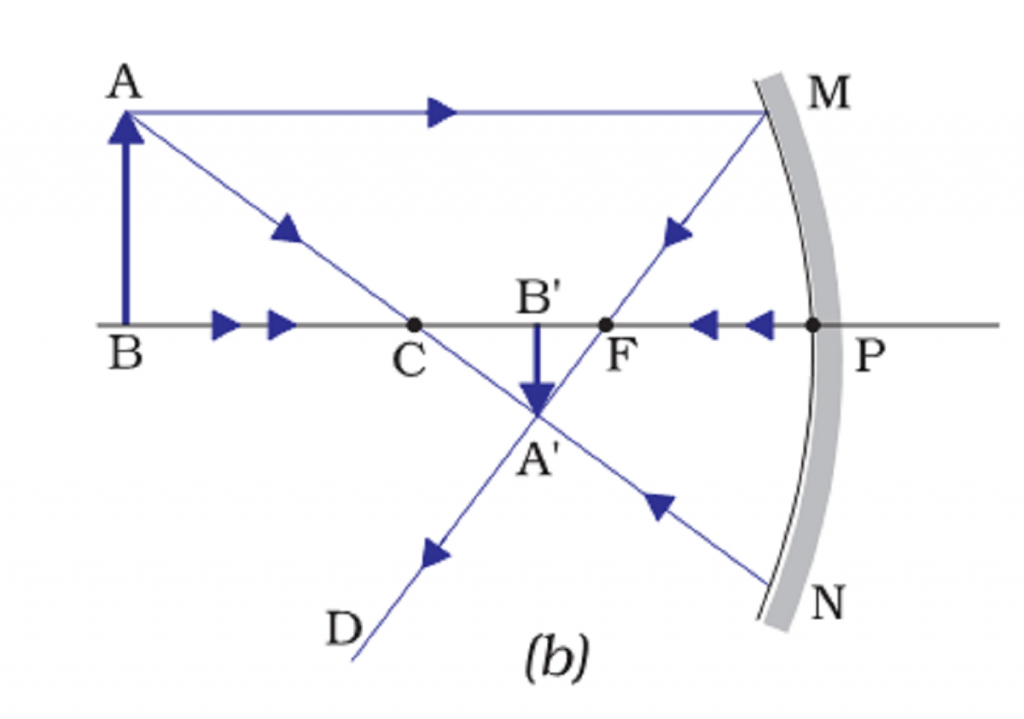Activity 10.3 Class 10 Science, Light Reflection and Refraction
Brief procedure:
Activity 10.3 asks us to bring a concave mirror, find its focal length; and observe the position of the created image.
Explanation:
A concave mirror finds its use in a headlight and telescope. It spreads the light of the bulb in a headlight and acts as a reflector in a telescope. It is readily available on online shopping sites. Its focal length can be of any length, but typically we get a concave mirror of 15 to 20 cm focal length.
To find the focal length experimentally, we use some light source like a candle, torch, or sunlight. A concave mirror forms a pinpoint image with a distant light source. The distance of the mirror to this pinpoint image is the focal length of the mirror.
(To determine the focal length the distance of the origin of light from the mirror should be sufficient to form a pinpoint image.)
The position of image of candle
Candle beyond C:
A candle placed beyond the centre of the concave mirror forms its diminished image in between the centre and focal point. When we bring a white paper and adjust it to that position, it gives a sharp image of the candle. The image is inverted, real (forms on a paper), diminished, and bright.

Candle Just beyond C:
Here image imprint is only slightly smaller than the actual image of the object. Its position is just before the centre. The image here is also inverted, real like above one, and the ray diagram is also similar.
Candle between F and C:
Here the image is magnified, real and inverted.
At f:
If a candle is at the focal point, the mirror makes its image is at infinity.
Between f and mirror:
Enlarged, virtual, and erect.
Next: How to make a ray diagram with a concave mirror, Activity 10.4.
See also: How a concave mirror starts a fire with sunlight, Activity 10.2.
Activity 10.3 Class 10 Science, Light Reflection and Refraction
i couldnt find the ‘at c’ case
Thank u